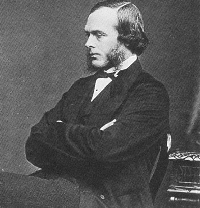Joseph Lister is alongside the likes Louis Pasteur, Robert Koch, Alexander Fleming and Edward Jenner in the work he did to further medical knowledge. Joseph Lister did not discover a new drug but he did make the like between lack of cleanliness in hospitals and deaths after operations. For this reason, he is known as the ‘Father of Antiseptic Surgery’.

Lister was born in 1827 and died in 1912. As Professor of Surgery at Glasgow University, he was very aware that many people survived the trauma of an operation but died afterwards of what was known as ‘ward fever’.
Work on ward cleanliness and the link between germs and good post-operative health had already been studied by a Hungarian doctor called Ignaz Semmelweiss. He argued that if a doctor went from one patient to another after doing surgery, that doctor would pass on to the next visited patient a potentially life threatening disease. He insisted that those doctors who worked for him wash their hands in calcium chloride after an operation and before visiting a new patient.
Deaths on the wards Semmelweiss was in charge of fell from 12% to just 1%. But despite this, he came up against the conservatism of those who dominated Hungarian medicine and his findings were ignored. Semmelweiss died in 1865 of blood poisoning.
In 1865, Lister read about the work done by Louis Pasteur on how wine was soured. Lister believed that it was microbes carried in the air that caused diseases to be spread in wards. People who had been operated on were especially vulnerable as their bodies were weak and their skin had been cut open so that germs could get into the body with more ease.
Lister decided that the wound itself had to be thoroughly cleaned. He then covered the wound with a piece of lint covered in carbolic acid. He used this treatment on patients who had a compound fracture. This is where the broken bone had penetrated the skin thus leaving a wound that was open to germs. Death by gangrene was common after such an accident. Lister covered the wound made with lint soaked in carbolic acid. His success rate for survival was very high.
Lister then developed his idea further by devising a machine that pumped out a fine mist of carbolic acid into the air around an operation. The number of patients operated on by Lister who died fell dramatically.
|
Years |
Total cases |
Recovered |
Died |
Death rate |
|
1864 to 1866 |
35 |
19 |
16 |
45.7% |
|
1867 to 1870 |
40 |
34 |
6 |
15.0% |
![]()